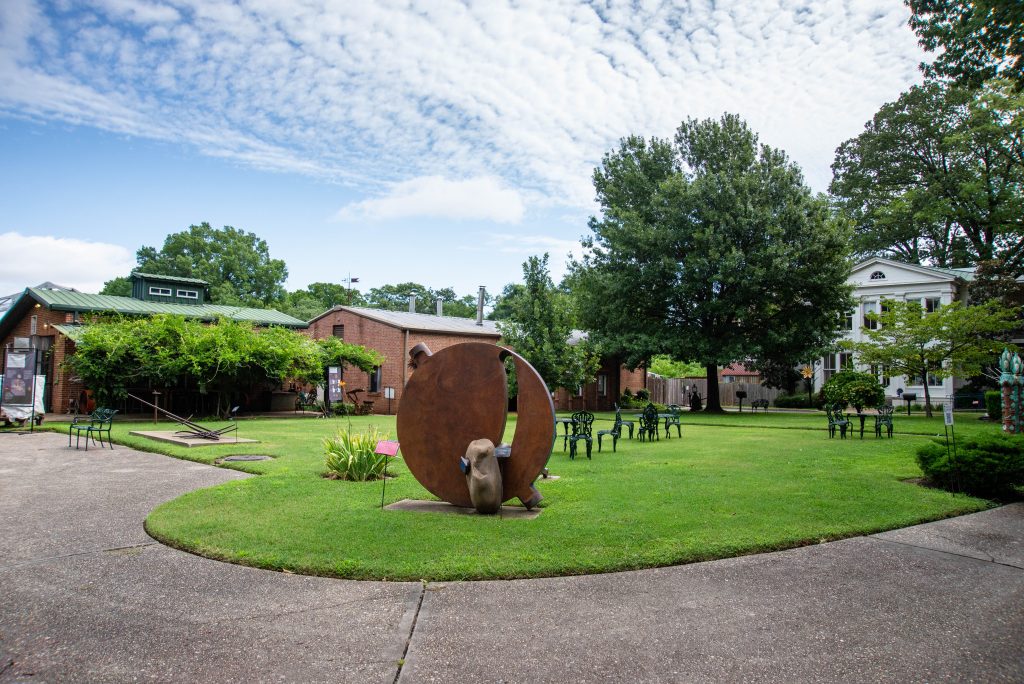Ubud’s Contemporary Art Gallery, Tonyraka
A space that showcases contemporary Indonesian artists and traditional work while playing host to a lounge for locals and visitors alike
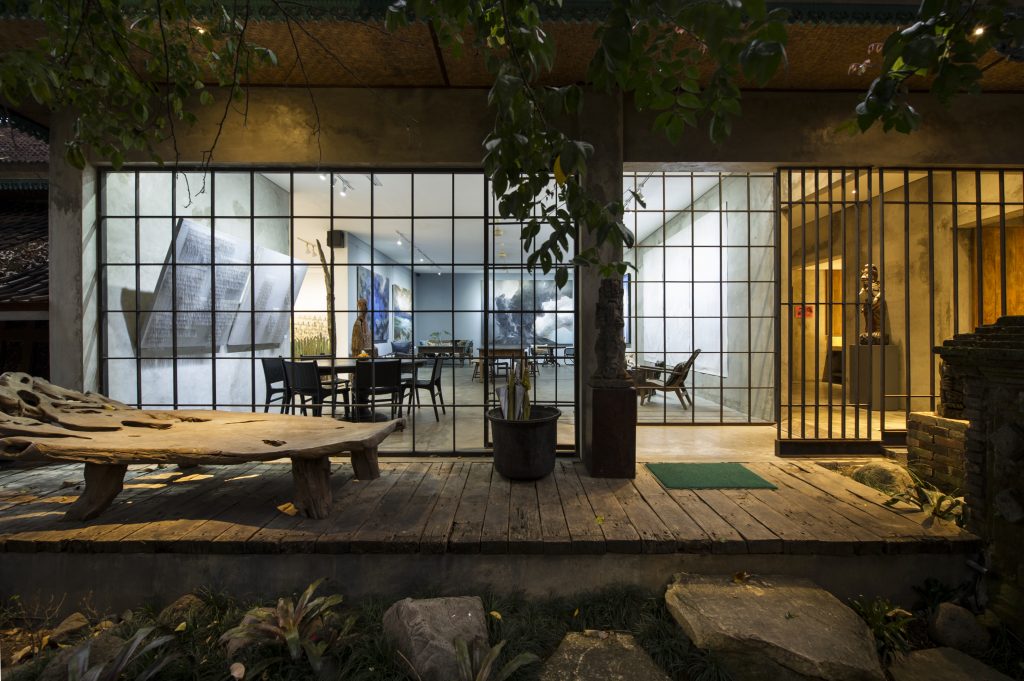
Wood and stone carvings can be found all over Bali. Along roads, in homes, and in temples, the faces and figures of Brahma, Vishnu, Shiva, and Ganesha are constant reminders of religion, tradition and values on the island. On JI Raya Mas street in Ubud, Tonyraka Art Gallery was originally a family-owned wood-carving gallery that opened in 1968—founded by A.A Gede Raka Wirayuda, but in the 1990s his son A.A Bagus Tony Hartawan began to transform the space by introducing artworks by Indonesian artists with a more modern aesthetic.
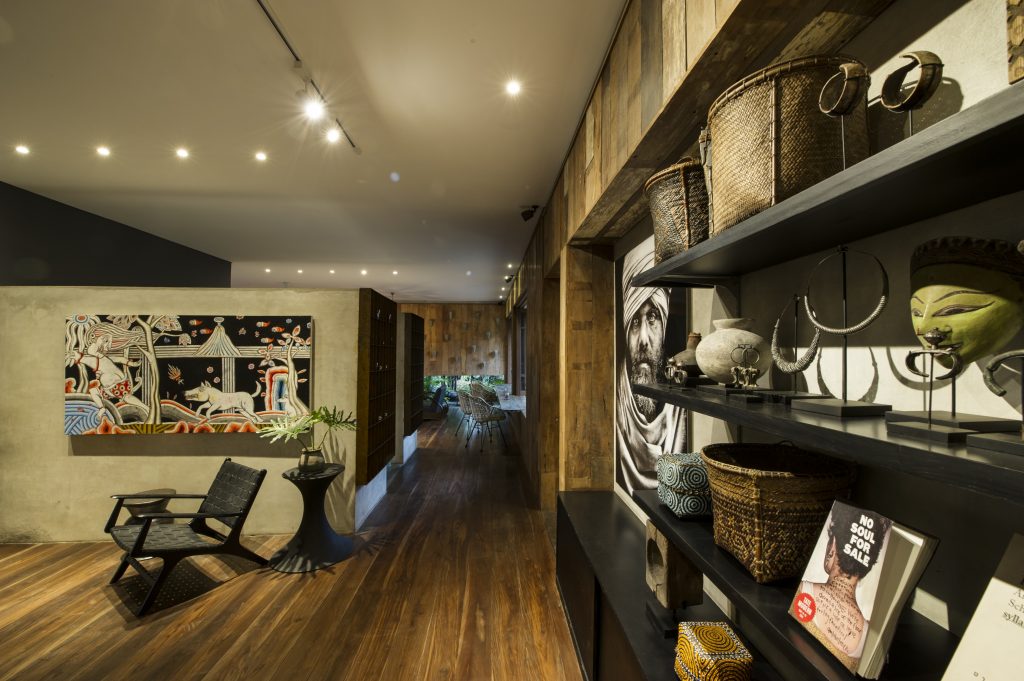
Even more recently, Hartawan created the new Art Lounge, solidifying Tonyraka not only as a significant gallery for contemporary Indonesian art, but also as an inviting gathering place for the community. The sprawling compound now comprises several gallery spaces, the lounge and homes for five generations of Hartawan’s family.

A café space has become the new entrance to the compound, which houses a massive collection of contemporary and historic arts of Indonesia. It’s here that Hartawan greets visitors with a warm smile. Inspired by his travels around the world, visiting museums and galleries with cafés, Hartawan wanted the new Tonyraka Art Lounge and café to serve family recipes and local specialties like Burber Bali rice porridge.
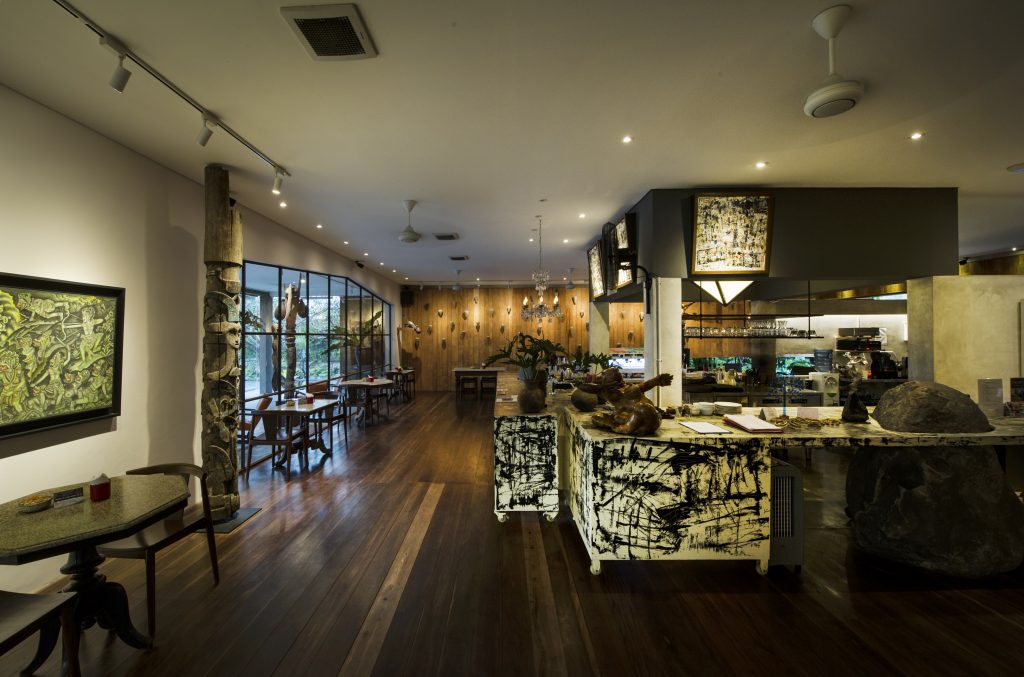
Artist I Made Wiradana created a bold black and white design for the La Marzocco espresso machine and counter. The extensive coffee menu serves locally sourced coffee and espresso drinks. Hartawan, along with his son Bima and daughter-in-law Tiwi developed the space to be a community “living room” that also displays contemporary and historic Indonesian treasures. In addition to the paintings on show, historic locks from a shipwreck are hung along another wall. On the other side of the room, tribal pieces cover shelves.

Walking though the hallway at the back of the lounge leads to the first gallery displaying Putu Wirantawan‘s work. Hartawan often places some traditional items in each gallery to honor the artistic traditions of Indonesia alongside contemporary work. Standing in front of a large painting by Mangu Putra, Hartawan explains, “He believes in Tri Hita Karana which means Three Causes to Prosperity with a goal to create relationships that are harmonious. This concept asks for respect of humans, nature, and God.”
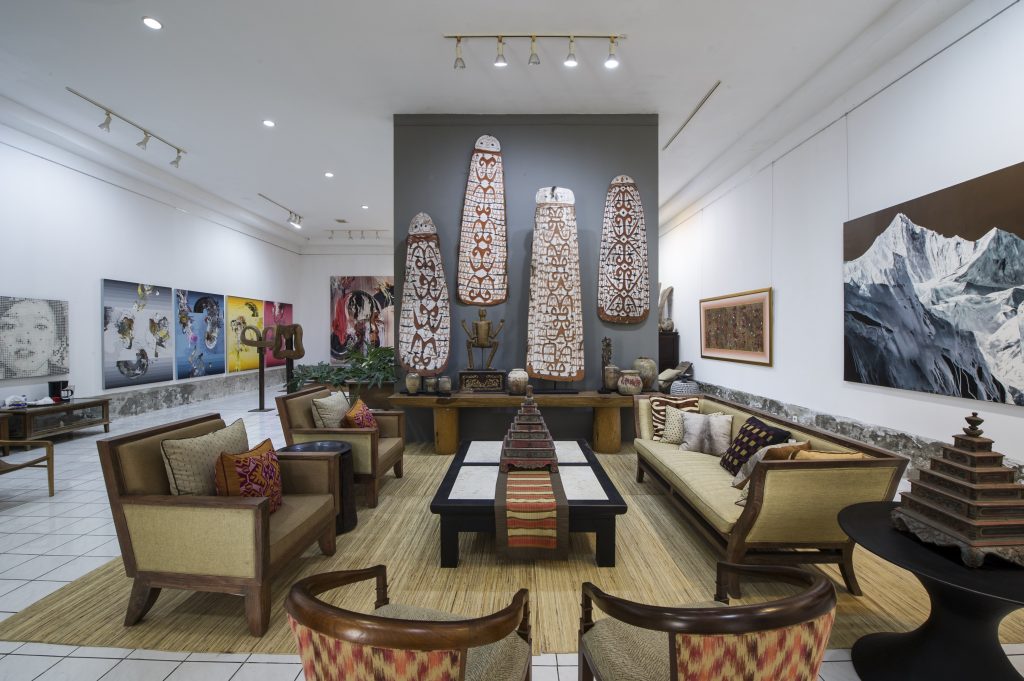
Influential artists count on Hartawan to champion their work—I Made Wiradana, who paints parodies of western aesthetic styles that challenge the meanings of Western art conventions, included. Teja Astawa uses Balinese icons inspired by his family roots—his grandfather comes from the Kamasan village in Klungkung—and he explores this iconography to express his thoughts in a contemporary way, often through satire.

Also on show are works by I Nyoman Erawan, a well-respected artist who makes abstract and figurative paintings, as well as video art. He also has found ways to depict Balinese symbols to express his point of view. Hartawan also displays some of I Gusti Ayu Kadek Murniasih’s (Murni) bold paintings. She passed away in 2006, but continues to be one of the most significant women painters in the Indonesian art community and beyond.

Hartawan feels his background in architecture makes him especially sensitive to texture, color, and composition and informs many of his designs for the compound. He continues to expand the gallery and event spaces on the property, serving as designer for both the new buildings and restorations of classical structures. Hartawan draws inspiration from everything that surrounds him in Bali. “In Balinese culture we see the pattern of carving called massir, which is from Egyptian, Arab [countries], and India,” he says. “The Balinese people are very flexible in absorbing and interacting with other cultures for many centuries.”
In the back of the property, a new pavilion—for which Hartawan bought an original house in the Nganjuk village in East Javais—is being readied for opening. The home had been occupied for six generations. Hartawan had it dismantled, moved to Ubud, and is rebuilding it at Tonyraka. He plans to use the living room, bedrooms, dining room and kitchen to display the contemporary furniture collections that he has produced in Java. They will use the rest of the space for events and workshops that teach drawing, photography, printing, coloring Balinese puppets, painting, and sculpture. At Tonyraka, the vast gallery spaces along with the new café space, Hartawan keeps trying to make his destination relevant in the art world and an inviting community space for the people of Ubud. He notes, “After 24 years I keep hitting the gong. Come here! See the art!”

Stepping out into the courtyard, the full spectrum of the Hartawan family compound comes into view. The gardens are filled with traditional furniture and statues. One table is layered with vintage Balinese shadow puppets. Yet another gallery has a group show on view. Hartawan’s father sits nearby enjoying the view. “We live here and work here. I serve my parents. I serve my family,” says Hartawan. “We show the young generation how we show our gratitude to practice the good karma.”

Of his parents, he says, “I have to thank them for giving me the chance to serve them. I practice so I can show my son how we should get pleasure by giving not by taking. Hopefully my son will do the same practice and show it to his children. Just like how we plant a mango: you plant the seed, you put your intensity and your consciousness into growing this mango seed and then we will eat the sweet mango together.”
Images courtesy of Tonyraka Art Gallery


